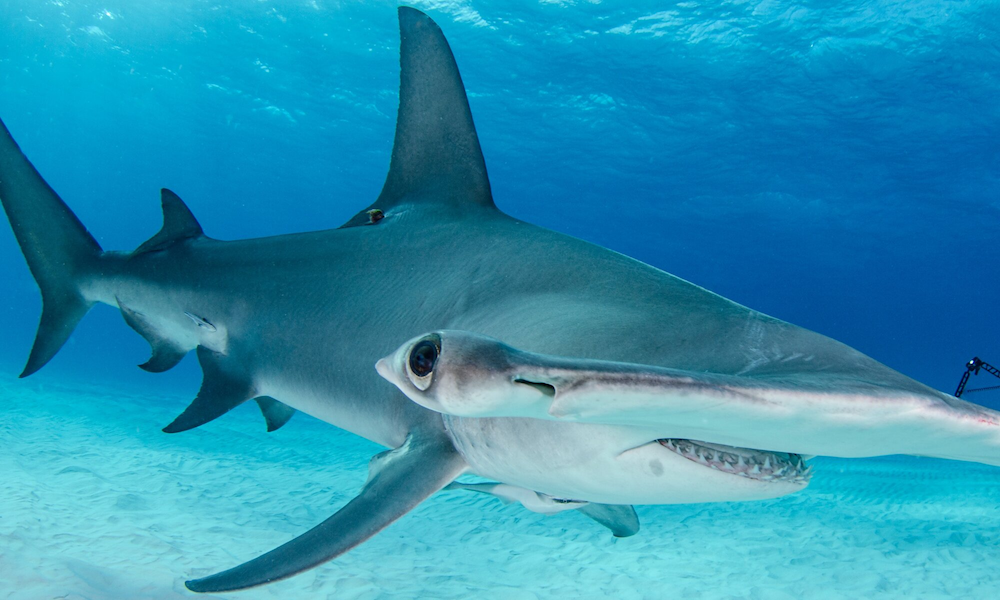Introduction
The waters of Western Australia are home to a diverse range of marine life, but few creatures capture the imagination quite like the hammerhead shark of Western Australia. With its distinctive head shape and remarkable adaptations, the hammerhead shark has intrigued researchers, and fishermen for years. In this comprehensive article, we delve into the feeding habits, habitat preferences, fishing , and tackle requirements for this remarkable species.
Feeding Habits: A Carnivore’s Diet
Hammerhead sharks, scientifically known as Sphyrnidae, are carnivorous predators with a unique advantage – their distinctive hammer-shaped head, or cephalofoil. This specialized head structure is believed to enhance their hunting capabilities by providing a wider field of vision and increased electroreception, allowing them to detect prey more effectively. Their diet predominantly consists of fish, squid, crustaceans, and occasionally smaller sharks or rays. Hammerheads are known to be opportunistic feeders, using their cephalofoils to pin down and maneuver prey for consumption.
Depth and Habitat: Where Hammerheads Roam
Hammerhead sharks are found in a variety of oceanic environments, from shallow coastal waters to deeper offshore regions. They often prefer warm temperate and tropical waters, making Western Australia’s coastal areas an ideal location for their presence. These sharks can be encountered at various depths, with some species favoring shallower waters of around 20 to 30 meters, while others venture into deeper realms of up to 500 meters. This adaptability to different depths and habitats contributes to their widespread distribution along the Western Australian coastline.
Proximity to Shore: The Hammerhead’s Range

Hammerhead sharks are known to inhabit a wide range of distances from the shore in Western Australia. While some species may be found relatively close to the coastline, others venture further out into deeper offshore waters. Depending on the specific species and their preferences, encounters with hammerhead sharks can occur both near the shore and in offshore regions, providing a diverse range of opportunities for researchers, divers, and fishermen alike.
Fishing for Hammerhead Sharks: A Challenge and Reward
Fishing for hammerhead sharks is a pursuit that requires careful consideration due to their conservation status and potential size. Many species of hammerhead sharks are listed as vulnerable or endangered due to overfishing and habitat degradation. As a result, catch-and-release practices are highly encouraged to ensure the conservation of these magnificent creatures.
When targeting hammerhead sharks, anglers should be prepared for a challenging battle. These sharks are known for their strength and endurance, making them formidable opponents for even experienced fishermen. Their unique head shape can make hooking them more complex, so specialized tackle and techniques are essential to increase the chances of a successful catch.
Tackle Requirements: Gear Up for Success
Fishing for hammerhead sharks requires specific tackle to handle their power and size. Here’s a breakdown of the essential gear:
- Rods and Reels: Opt for heavy-duty saltwater rods and reels designed for big game fishing. A sturdy rod with a high line capacity reel is necessary to withstand the force of the shark’s initial run.
- Line: Choose a strong, braided line with a high breaking strength. A line with a minimum of 80 to 100 pounds is recommended to withstand the power of a hammerhead shark.
- Leaders: Use a heavy monofilament or wire leader to prevent the shark’s abrasive skin from cutting the line. Leaders should be at least 6 feet long and 300-pound test strength.
- Hooks: Select circle hooks, which are more likely to hook the shark in the corner of the mouth, increasing the chances of a successful release.
- Bait and Lures: Fresh and natural baits such as whole fish, squid, or chunks of fish work best for hammerhead sharks. Lures not recommended.
- Fighting Belts and Harnesses: These accessories help distribute the force of the fight, reducing strain on the angler’s body during the battle.
- Tagging Equipment: If practicing catch-and-release, tagging equipment allows for the collection of valuable data while minimizing harm to the shark.
Conclusion
The hammerhead shark is a captivating and complex species that holds a significant place in Western Australia’s marine ecosystem. Its distinctive head shape, feeding habits, and habitat preferences make it a subject of fascination for researchers and enthusiasts alike. However, as these creatures face conservation challenges, responsible fishing practices and an emphasis on catch-and-release are crucial to ensure their survival for generations to come. Understanding the intricacies of hammerhead shark behavior and investing in the appropriate tackle not only enhances the fishing experience but also contributes to the protection of these magnificent creatures in the waters of Western Australia.
If you enjoyed this article feel free to visit my Blog page. Thanks



